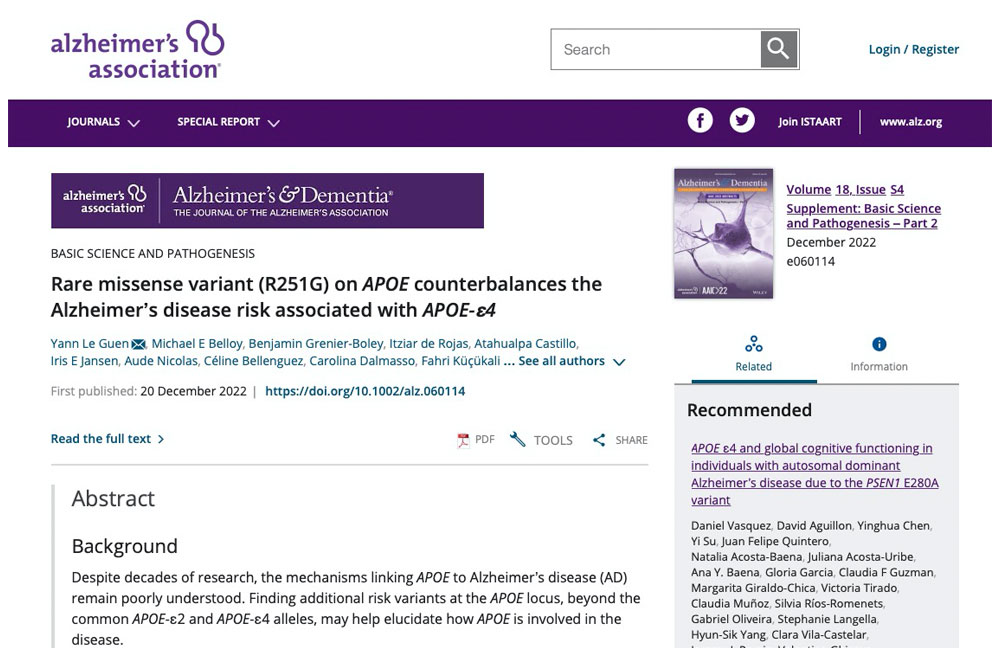Rare missense variant on APOE counterbalances the Alzheimer’s disease risk associated with APOE‐ε4
Rare missense variant (R251G) on APOE counterbalances the Alzheimer’s disease risk associated with APOE‐ε4
Background
Despite decades of research, the mechanisms linking APOE to Alzheimer’s disease (AD) remain poorly understood. Finding additional risk variants at the APOE locus, beyond the common APOE-ε2 and APOE-ε4 alleles, may help elucidate how APOE is involved in the disease.
Method
Association with case-control status was tested in a sequenced discovery sample (Stage 1) and followed-up in several microarray imputed cohorts as well as the UK Biobank whole-exome sequencing resource using a proxy-AD phenotype (Stages 2+3) (Table 1). Stage 1 included 37,409 non-unique participants of European or Admixed-European ancestry, with 11,868 cases and 11,934 controls passing analysis inclusion criteria. In Stages 2+3, 475,473 participants were considered across 8 cohorts, of which 56,029 cases, 28,484 proxy-AD cases, and 328,372 healthy-controls passed inclusion criteria, and were of European ancestry.
Result
Two missense variants were associated with a two to three-fold decreased AD risk: R251G (odds ratio, 0.44; 95% confidence interval [CI], 0.33-0.59; P = 4.7×10-8) and V236E (odds ratio, 0.37; 95% CI, 0.25-0.56; P = 1.9×10-6) (Table 2, Figures 1, 2). Additionally, the cumulative incidence of AD in carriers of these variants was found to grow more slowly with age compared to non-carriers (Table 3).
Conclusion
We identified a novel variant associated with AD, R251G, which mitigates the ε4 associated AD risk, and confirmed the protective effect of the V236E variant. The location of the variants confirms that the carboxyl-terminal portion of apoE plays an important role in AD pathogenesis. The large risk reductions reported here, suggest that protein chemistry and functional assays of these variants have the potential to identify novel pathways for drug development.

